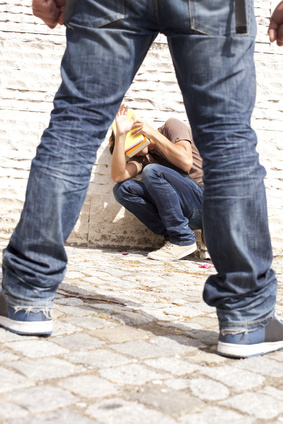Where Do Bullies Come from?
Bullies aren’t born – they’re taught. It’s true that there are inborn factors, but the more important factors are environment influences such as a child’s home life, school life, community and culture. If children see bullying behaviours are tolerated or encouraged, they’ll propagate them.
The Seven Types of Bullies
These seven types of bullies are from Barbara Coloroso’s book The Bully, The Bullied and the Bystander.
The Confident Bully: feels good by making himself feel superior to others. Not surprisingly, he has a big ego, a tendency towards violence and no empathy for his targets. Teachers and classmates might admire his strong personality but his lack of empathy and big ego means he has few good friends.
The Social Bully: rumor, gossip, verbal taunts and exclusion are the weapons of choice for the social bully. She’s easily jealous of others and has a poor sense of self but she hides it all behind an exaggerated confidence and forced charm. She can pretend to be caring and compassion as needed to cover up her games.
 Fully Armored Bully: flat affect characterizes this one. He has a cold and emotionless exterior because his feels are so deeply buried that even he can’t identify them. The one area he does demonstrate emotion is in his determination to carry out his bullying. Like the social bully, the fully armored bully can be charming when needed to cover up his bullying but is vicious and vindictive with his targets.
Fully Armored Bully: flat affect characterizes this one. He has a cold and emotionless exterior because his feels are so deeply buried that even he can’t identify them. The one area he does demonstrate emotion is in his determination to carry out his bullying. Like the social bully, the fully armored bully can be charming when needed to cover up his bullying but is vicious and vindictive with his targets.
Hyperactive Bully: usually suffers from some form of learning disability and consequently struggles in school and in some cases can’t accurate process classmates’ social cues. Because of this, he’s quick to believe other students are picking on him and blames other students for starting conflicts.
The Bullied Bully (aka the Bully Victim): is both a target of bullies (usually by adults or older kids) and a bully himself (towards smaller, weaker kids). The bully-victim takes out his powerlessness from being bullied onto other kids that are weaker than him.
The Bunch of Bullies: the group mentality plays a big role here where a group of potentially ‘nice’ kids collectively do acts towards someone that they individually would not do were they alone. A group of nice kids repeatedly trying to hurt another student is still bullying.
The Gang of Bullies: is a group of allies, not friends, banded together for reasons of power, control and domination over a particular area or ‘turf’. Their dedication to their group enables them to disregard the consequences of their actions and the pain they inflict on others.
Bullies Have Many Traits in Common
While bullies can be grouped into the seven types described above, all bullies have certain traits in common, specifically they:
- Like to control and dominate other people.
- Find it hard to empathize with others or see from other people’s perspectives
- Like to use others to get what they want
- Will rarely act out when adults are around – instead choosing to wait for the right moment when the adults aren’t looking.
- View weaker kids are prey.
- Do not accept responsibility for their actions
- Lack foresight and are unconcerned with the consequences of their actions

